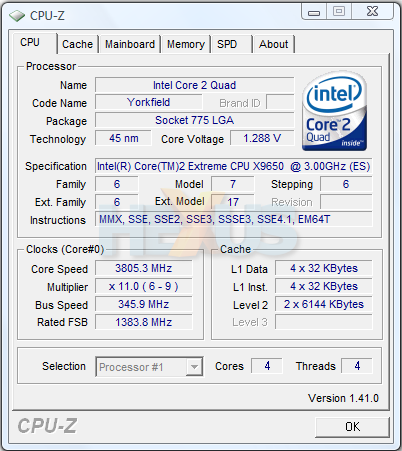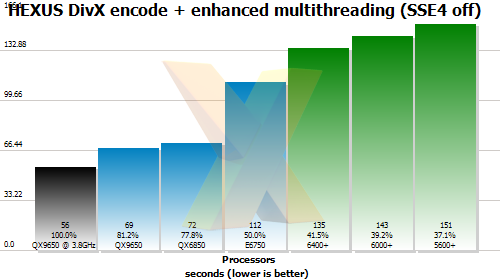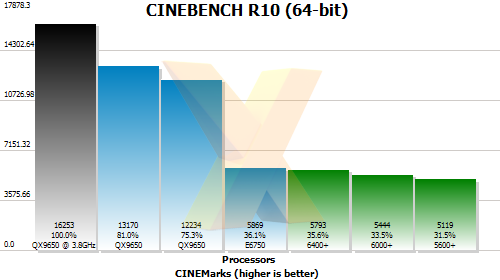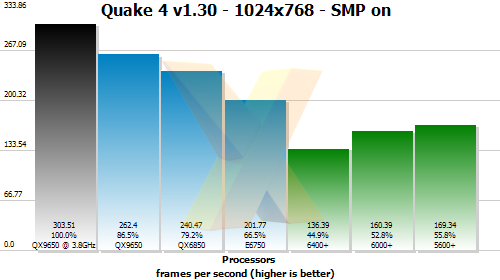Overclocking and power-draw
The Intel Yorkie is clearly not aimed at girls (ahem, Yorkfield), so we had our own big girl, James Smith, push our engineering-sample processor, to see just how much frequency headroom the initial 45nm processors currently have. Overclocking tests were run on our standard air-cooled setup.

Discounting the possibility of motherboard-related failure by increasing the multiplier to 11x, 3.8GHz was achievable with just a simple bump in voltage. We then re-ran three benchmarks and included the 3.8GHz-clocked Yorkfield in the graphs.



The pseudo Intel Core 2 Extreme QX9950 - or whatever Intel will call a processor operating at that speed - produces some gargantuan numbers, clearly.
Power-draw
Power-consumption figures are taken for the entire system from the power socket and then adjusted to account for the efficiency of the power supply, in this case 82 per cent.We ran multiple concurrent iterations of the Prime95 torture test - so four for quad-core and two for dual-core processors - and have noted the peak readings below.

Here's something interesting. Intel claims a 130W TDP for both the Yorkfield (45nm) and Kentsfield (65nm) processors. However, we see that the Yorkfield processor draws >40W less than the equivalent 65nm part. One would suspect as much, given the smaller manufacturing process and lower voltage. We also noted that the QX9650 ran a full 10°C cooler than the 65nm QX6850 when both were placed under full load and cooled by an AKASA AK-965.
The Athlon 64 system decided to commit spectacular seppuku so please head on over to here to see comparison numbers up against Intel quad-core processors, albeit on a different system.









